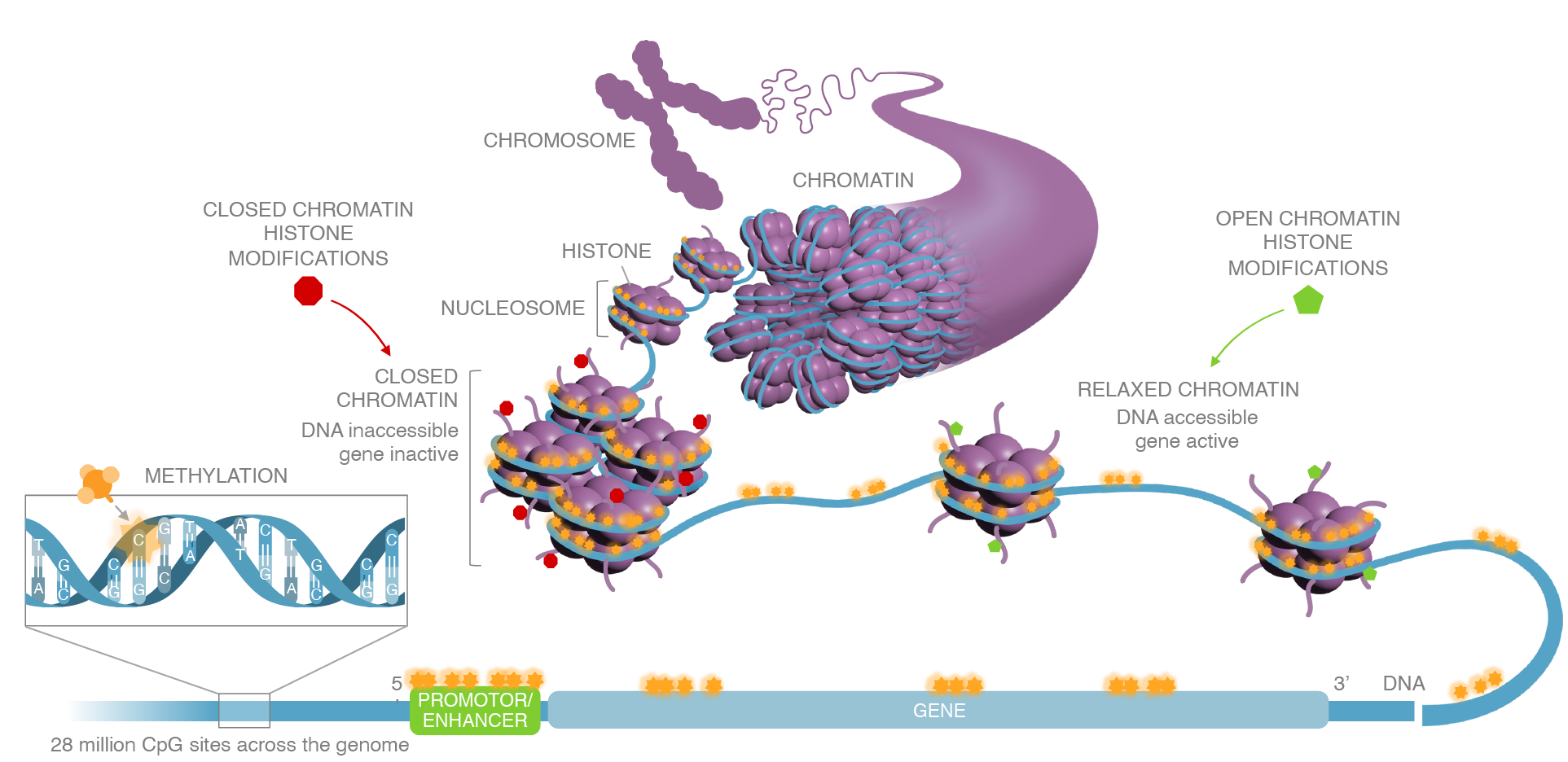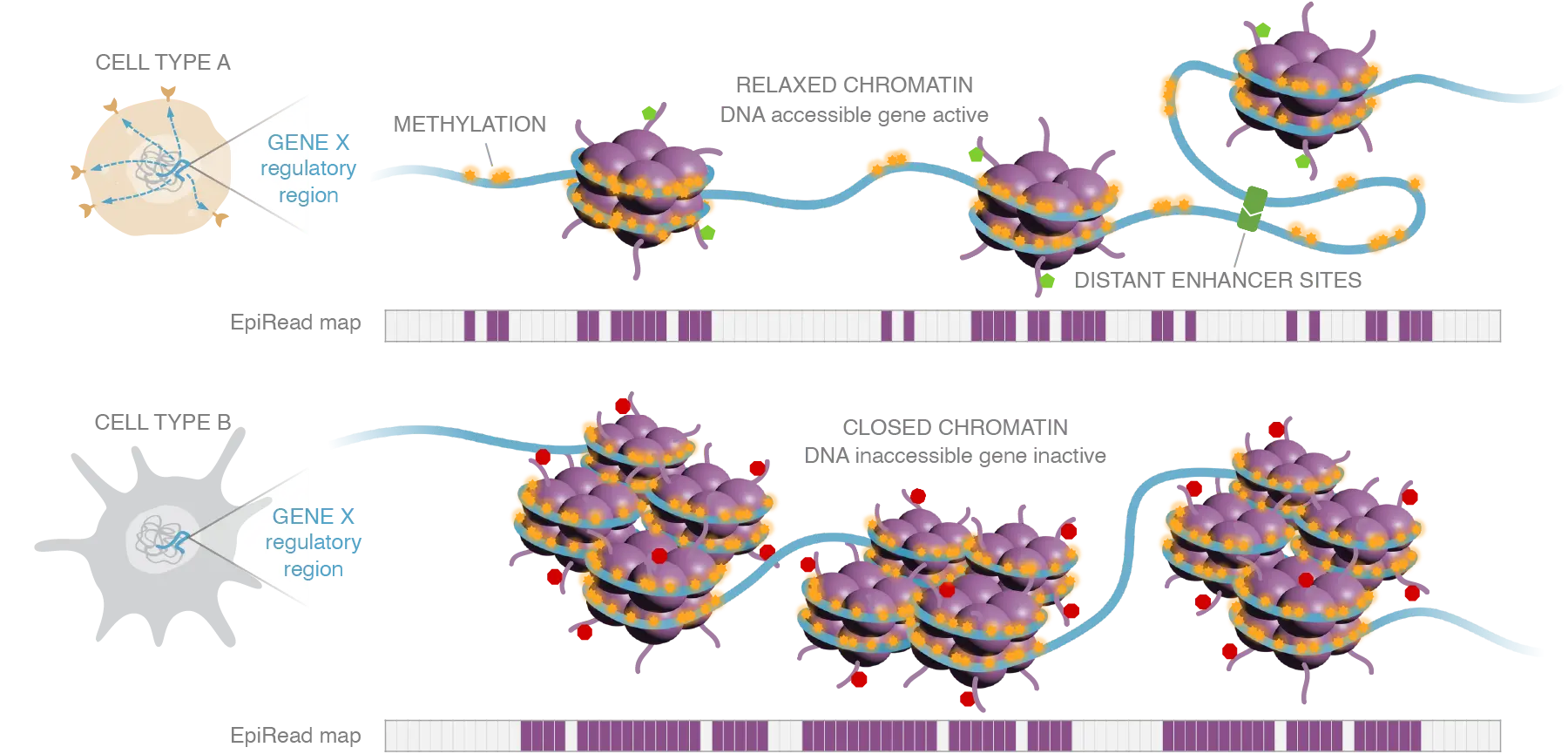Controlling epigenetic regulation of cellular states
The biology behind the cellular state
Epigenetics serves as the “software” of our genome, orchestrating gene expression by modifying the accessibility of genes without altering the DNA sequence itself. DNA methylation and histone modifications work together, turning genes on or off to determine their expression levels.

Methylation atlas of human tissue
Historical work established that DNA methylation is the program for cellular identity and function. It is an incredibly stable and conserved signal, and each cell type in the body, despite having the same DNA, has an epigenetic signature that determines its different identity and function. For example, the beta islet cell is the only cell in our body with the insulin gene turned on, even though every cell has that gene.

EpiRead™
Moonwalk’s EpiRead technology profiles and maps the methylome across all 28 million CpG sites in the genome at single-cell resolution, histone modifications, chromatin structure, and 3D DNA contact points, with significant noise suppression applied. All classes of regulatory elements are captured, including promoters and known and unannotated enhancers, which regulate gene expression and cell state in a tissue-specific manner.
Moonwalk used EpiRead to create the first comprehensive epigenetic profiles of T cell subsets, adipocytes, and hepatocytes. This unique capability enables a deeper understanding of the biology and gene regulation between cellular states and disease vs. health. These insights can better inform therapy development for known gene targets and, with Moonwalk’s proprietary ML/AI-driven computational capabilities, enable target discovery for complex diseases.

EpiWrite™: an important research tool
EpiWrite technology acts on EpiRead insights to activate and suppress genes in a highly multiplexed fashion. These epigenetic edits do not involve DNA cutting and can be reversible, durable, or transient. EpiWrite payloads can be delivered to target tissues by LNP, AAV, or other delivery methods.
Moonwalk utilizes this technology as an important research tool for its large-scale perturbation experiments to predict the causality of targets. It includes highly multiplexed activation or silencing of all possible regulatory elements through a comprehensive toolbox of gene modulation mechanisms.
Finally, the selected targets are validated through internal wet lab assays and in-vivo experiments in disease-specific models.
Technology in action: learning the language of cell states
The large scale datasets generated through Moonwalk’s platform represent an unprecedented scale opening up the possibility of making accurate predictions about specific set of perturbations to achieve a desired regulatory gene expression state and how to transition cells from an initial state (e.g. aged or diseased) to desired state (e.g. rejuvenated or functional).

Moonwalk’s end-to-end discovery and validation platform seeks to predict and deterministically reprogram cell states in complex diseases.
